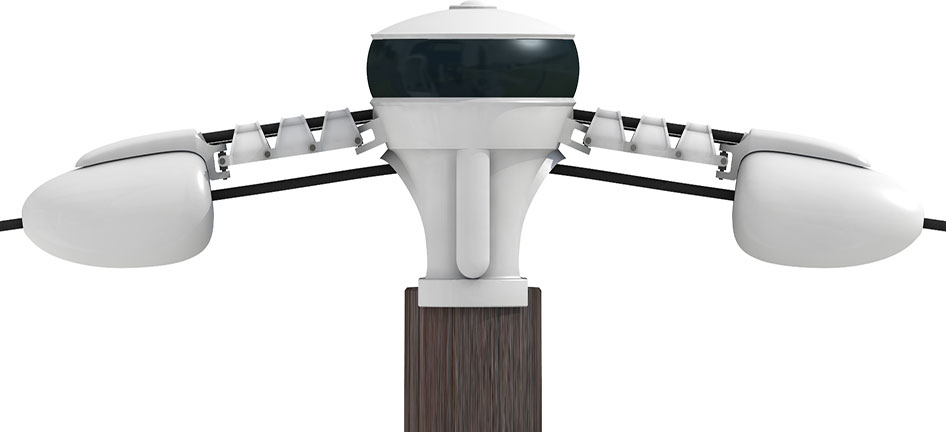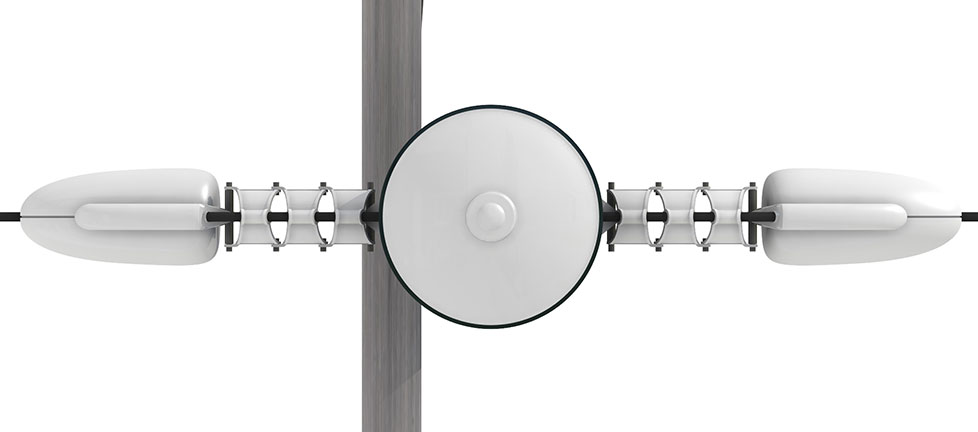By fall, AT&T is planning to conduct field trials of its millimeter wave propagation over power line technology — named Project AirGig. In a press release, the company said it is in “advanced discussions with power companies and others” to conduct trials in at least two locations, with at least one in the U.S.
First disclosed in September 2016, AT&T stated the technology has the potential to provide Gbps speeds. Using existing power lines as the distribution network avoids the time and expense of laying fiber or building new towers.
The field trials will provide data on link margins and data rates in non-ideal weather conditions such as rain, snow and high winds. Working with power companies, AT&T and utilities can evaluate using the system for smart grid applications and monitoring power line integrity.

In this week’s press release, AT&T described the development of AirGig technology:
“More than 10 years ago, some AT&T Labs engineers worked on earlier experiments to deliver BPL (broadband over power lines). Back then, broadband merely meant megabit speeds. The technology worked well, but couldn’t keep up with the move to higher speeds.
"So, our engineers shifted their focus from BPL to millimeter wave (mmWave) technology and became curious about combining mmWave and powerlines. No one in the industry had connected these technologies together yet.
"Some of the first experiments involved transmitting data signals using funnels from a local auto parts store covered with aluminum foil, placed next to unenergized power cables. These tests produced unexpected positive results, creating the foundation of Project AirGig’s development — transporting mmWaves over powerlines.
"Now, we have more than 200 patents and patent applications for Project AirGig. AT&T Labs engineers and scientists invented low-cost plastic antennas, a radio ristributed antenna system (RDAS), mmWave surface wave launchers and inductive power devices.
"The RDAS will reconstruct signals for multi-gigabit mobile and fixed deployments. A typical DAS carries cellular signals throughout buildings and stadiums, using fiber and/or coaxial cables to transmit analog signals. With the RDAS, we found a system design to effectively deliver not just broadband, but also mobile traffic.
"The mmWave surface wave launchers and inductive power devices can power themselves without a direct electrical connection. These devices create a multi-gigabit signal that travels along or near the wire — not through it."
In what appears to be one of the patents covering the technology, AT&T describes AirGig as millimeter wave surface wave communications.
Andre Fuetsch, chief technology officer and president of AT&T Labs, said, “AT&T Labs is ‘writing the textbook’ for a new technology approach that has the potential to deliver benefits to utility companies and bring this multi-gigabit, low-cost internet connectivity anywhere there are power lines — big urban market, small rural town, globally.”

